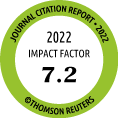Return to content in this issue
Impact of Specific Training in Anaphylaxis for Triage Nursing Staff in the Pediatric Emergency Department of a Tertiary Hospital
Arroabarren E1, Alvarez-García J2, Anda M1, de Prada M2, Ponce C2, Alvarez-Puebla MJ1
1Department of Allergy, Complejo Hospitalario de Navarra, CS Conde Oliveto, Pamplona, Spain
2Pediatric Emergency Unit, Department of Pediatrics, Complejo Hospitalario de Navarra Pamplona, Spain
J Investig Allergol Clin Immunol 2018; Vol 28(6)
: 401-406
doi: 10.18176/jiaci.0271
Background: After a diagnosis of anaphylaxis, patients receive action management plans to prevent and treat new episodes, including attending the emergency department for follow-up or further treatment. In a previous study, we observed that more than half of the children with anaphylaxis were incorrectly prioritized in our Pediatric Emergency Unit (PEU), thus delaying their treatment. In conjunction with our PEU staff, we designed a basic educational intervention (BEI) to try to solve this problem. We analyzed the effect of the intervention on triage of children subsequently diagnosed with anaphylaxis.
Methods: Our BEI consisted of a training lecture given to the PEU triage nurses and the design of a reference card highlighting symptoms and risk factors of anaphylaxis. We included 138 children with a medical diagnosis of anaphylaxis and assessed modifications in their triage priority level and waiting times (WT) before seeing a physician after our intervention. According to the BEI implementation date, 69 children were diagnosed before the intervention (G1) and 69 after (G2). Clinical data were compared to assess the severity of the episodes.
Results: There were no differences between the groups. WT decreased (from 8 to 1 minute; P=.03), and the number of correctly identified patients increased after the BEI (36.2% [G1] and 72.2% [G2]; P=.0001).
Conclusions: Our BEI was effective, improving the identification and prioritization of children with anaphylaxis and reducing their WT. We need to pay attention to the functioning of our patients’ reference emergency department and establish interdisciplinary measures that enable optimal management of anaphylaxis.
Key words: Triage, Anaphylaxis management, Children, Educational intervention, Specific education, Nursing staff, Multidisciplinary, Paediatric Canadian Triage and Acuity Scale (PaedCTAS)



